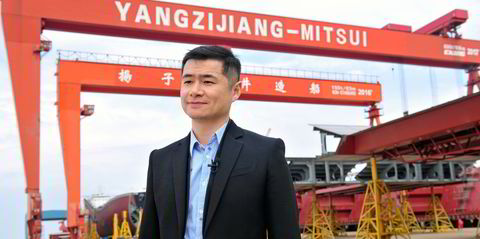At today’s eye-wateringly high gas prices, using a modern two-stroke LNG carrier over a steam turbine vessel can add $30m to $40m to the value of a cargo, Capital Product Partners chief commercial officer Spyros Leoussis says.
The modern vessel is not just of a larger capacity; its lower cargo boil-off rate, ability to operate in dual-fuel mode and onboard reliquefaction allow the charterer to deliver more product to its customers, he explained.
“We don’t see that being fully appreciated in the market currently. That will change,” he said, adding that it is one of the reasons LNG shipowning arm Capital Gas prefers to have open vessels rather than commit to projects and participate in tenders.
Capital Gas is focused on selecting what it believes is the best technology available for its LNG carriers, he said.
Its first seven vessels, which were all ordered by 2019, were built with low-pressure X-DF engines. The subsequent newbuildings are being fitted with high-pressure ME-GA propulsion systems combined with shaft generators.
Leoussis said that while all the company’s 14 two-stroke vessels are “very efficient”, the main reason for the change was to lower methane slip.
“We added around $10m of investment [to each ship] just to reduce the methane slip by around one tonne per day,” he said.
The CCO said a dual-fuel diesel-electric LNG carrier will emit five to six tonnes of methane per day compared with one tonne per day from Capital’s ships.
“That difference is very significant. When it [methane] will be priced, that will create an even better market for our vessels.”
Leoussis believes the current market is structurally long on shipping because more cargoes are moving from the US to Europe rather than longer haul to Asia. But he said it is “extremely short” of two-stroke vessels because of commodity pricing.
He thinks this will continue until 2025 or 2026, when more LNG will become available and the market will shift to being structurally short on shipping.
“Until the end of the decade I see a quite strong market on LNG shipping.”
Leoussis said that when the Energy Efficiency Existing Ship Index and Carbon Intensity Indicator emissions regulations kick in from 1 January 2023, the difference between LNG carrier types will become clearer and multiply.
He said two-thirds of the LNG fleet will have to phased out in the next 10 to 15 years and cautions those pushing for exclusions from the incoming regulations so that older vessels can continue to compete.
The tougher rules demand investments, he said, and backsteps do not help the case for decarbonisation.
“We have an environmental issue that we need to start solving. We should not be part of the problem.”





